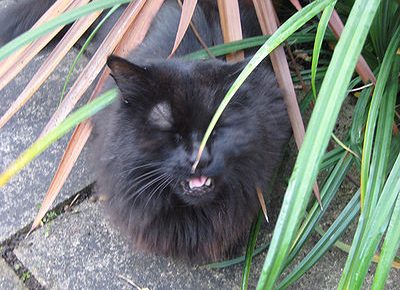
Pets that are aging or have experienced trauma often become arthritic. But that doesn’t mean they shouldn’t exercise.
Symptoms of arthritis can be a stiff gait, difficulty getting up from a prone position, lameness, swollen joints, pain, loss of joint flexibility, hesitation running, jumping, climbing stairs.
Pain can be treated with medication, although long-term use should only be with a veterinarian’s supervision to avoid side effects. Supplements such as glucosamine/chondroitin, omega 3 and 6, vitamin/mineral to name a few have proven helpful. Daily massage or acupuncture and acupressure often help with pain.
The correct exercises strengthen muscles, tendons and ligaments so that they don’t atrophy from disuse. Exercise stimulates joint fluid, lubricating joints, increases blood flow.
If your pet hasn’t exercised in a while, s/he needs to start slowly with low impact exercises such as walking, swimming, fetch, tug-o-war. At first you may have to increase pain medications. But regular daily exercise may reduce dosages and the need for medication. Exercise cautiously in very hot or icy weather. If you can’t take your pet outdoors, make up games that can be played at home. Hide treats and let your pet search for them. Play hide and seek. Give your cat a variety of toys that will encourage movement.
Watch your pet carefully to make sure s/he is not overdoing it. Pets want to please us so much that they do so in spite of feeling pain.
Check your pet’s weight. Obesity contributes to the pain of arthritis and tires pets to the point where they don’t want to exercise. Choose exercises carefully, go slowly, but don’t let your pet become a total couch potato.
Related Articles
- Understanding Arthritis in Cats and Dogs
- How can I help my senior dog?
- Caring for an Older Cat
- Cats and Arthritis
- Vitamins and Supplements for Your Dog



